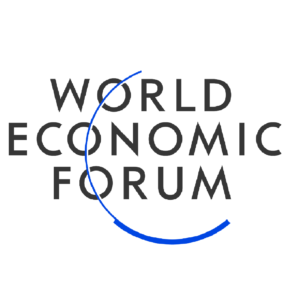- The World Economic Forum identifies the nine best factories in the world
- These “lighthouses” are selected from a survey of over 1,000 manufacturing sites based on a successful track record of implementing technologies of the Fourth Industrial Revolution
- Three of the nine “lighthouse” sites are in China, five are in Europe and one is in the United States
- For more information about the Annual Meeting of the New Champions 2018, please visit: http://wef.ch/amnc18
Follow the conversation using #AMNC18

Tianjin, People’s Republic of China, 4 September 2018 – Concluding a year-long study, the World Economic Forum today announces nine of the most advanced factories in the world, recognizing the strides that the world’s best manufacturers are making towards embedding the technologies of the Fourth Industrial Revolution into modern production.
The geographic distribution of the nine “lighthouses” demonstrates that while Europe has struggled to produce its own home-grown internet giant, the region remains a powerhouse when it comes to applying advanced technology to manufacturing. Five of the “lighthouses” are located in Europe, three in China and one in the United States. They were selected from an initial list of some 1,000 manufacturing companies based on their successful implementation of Fourth Industrial Revolution technologies in ways that have driven financial and operational impact.
The aim of this effort is to build a network of “manufacturing lighthouses” to address problems confronting industries in both advanced and emerging economies when it comes to investing in advanced technologies. Earlier work by the Forum identified that over 70% of businesses investing in technologies such as big data analytics, artificial intelligence or 3D printing do not take the projects beyond pilot phase due to unsuccessful implementation strategies. To aid the learning and adoption of technologies by other companies, all nine lighthouses in the network have agreed to open their doors and share their knowledge with other manufacturing businesses.
“Identifying the best manufacturing sites in the world is not only necessary, but responds to the stated need from the Future of Production community to accelerate the adoption and diffusion of Fourth Industrial Revolution technology,” said Helena Leurent, Head of the Shaping the Future of Production System Initiative and Member of the Executive Committee at the World Economic Forum. “The next step is to enable the lighthouses to take a leadership role in developing the overall production ecosystem to truly reap the benefits we expect.”
“The Fourth Industrial Revolution is real. Workers and management equally get augmented with technology. These pioneers have created factories that have 20-50% higher performance and create a competitive edge,” said Enno de Boer, Partner and Global Head of Manufacturing at McKinsey & Company, which collaborated with the Forum on the project. “They have agile teams with domain, analytics, IoT and software development expertise that are rapidly innovating on the shop floor. They have deployed a common data/IoT platform and have up to 15 use cases in action. They are thinking “scale”, acting “agile” and resetting the benchmark.”
The nine “lighthouses” have comprehensively deployed a wide range of Fourth Industrial Revolution technologies and use cases at scale while keeping humans at the heart of innovation. One exciting example from each of the sites is highlighted below:
- Bayer Biopharmaceutical (Garbagnate, Italy): ‘Using data as an asset’- While most companies use less than 1% of the data they generate, Bayer’s massive data lake has led to a 25% reduction in maintenance costs and 30-40% gains in operational efficiency
- Bosch Automotive (Wuxi, China): ‘Optimizing competitiveness’ – By implementing an ”order-to-make” product customization platform and using remote AI to predict maintenance needs before they occur
- Haier (Qingdao, China): ‘Customer-centric technologies’ – Artificial Intelligence led transformations include an ‘order-to-make’ product customization platform and the use of remote AI to predict maintenance needs before they happen
- Johnson & Johnson Depuy Synthes (Cork, Ireland): ‘Process-driven digital twinning’ – This factory used the internet of things to make old machines talk to one other, resulting in 10% lower operating costs and a 5% reduction in machine downtime
- Phoenix Contact (Bad Pyrmont and Blomberg, Germany): ‘Customer-driven digital twinning’ – By creating digital copies of each customer’s specifications, production time for repairs or replacements has been cut by 30%
- Procter & Gamble (Rakona, Czech Republic): ‘Production agility’ – A click of a button is all it takes production lines in this factory to instantly change the product being manufactured, which has reduced costs by 20% and increased output by 160%
- Schneider Electric (Vaudreuil, France): ‘Factory integration’ – Sharing knowledge and best practices across sites has helped this company make sure all its factory sites enjoy the highest energy and operational efficiencies, reducing energy costs by 10% and maintenance costs by 30%
- Siemens Industrial Automation Products (Chengdu, China): ‘3D simulated production line optimization’ – Using 3D simulation, augmented reality and other techniques to perfect the design and operations of its factory, employees helped increase output by 300% and reduced cycle time
- UPS Fast Radius (Chicago, USA): ‘Balancing capacity with customer demand’ – Meeting increasing consumer demand for fast-turnaround customized products has been made possible through a combination of globally distributed 3D printing centres with real-time manufacturing analytics
The network of “manufacturing lighthouses” will officially launch at the World Economic Forum’s 12th Annual Meeting of the New Champions, which will take place on 18-20 September 2018 in Tianjin, People’s Republic of China. Convening under the theme, Shaping Innovative Societies in the Fourth Industrial Revolution, nearly 2,000 business leaders, policy-makers and experts from over 80 countries will participate and explore more than 200 sessions over the three days of the meeting.
The World Economic Forum, committed to improving the state of the world, is the International Organization for Public-Private Cooperation.
The Forum engages the foremost political, business and other leaders of society to shape global, regional and industry agendas. (www.weforum.org)
